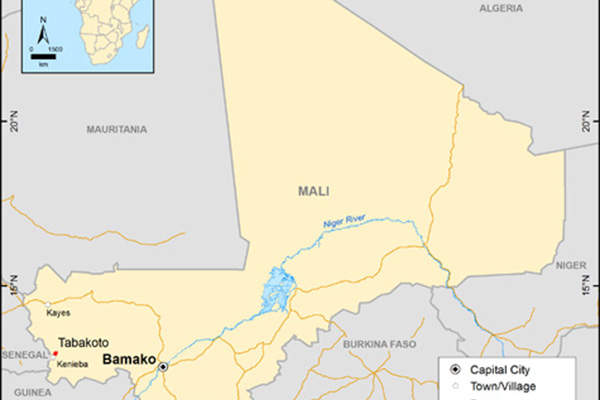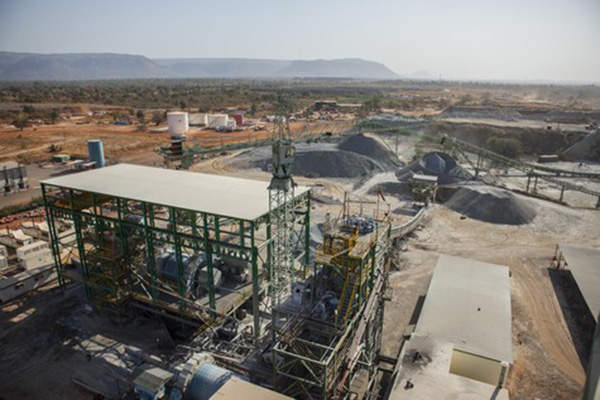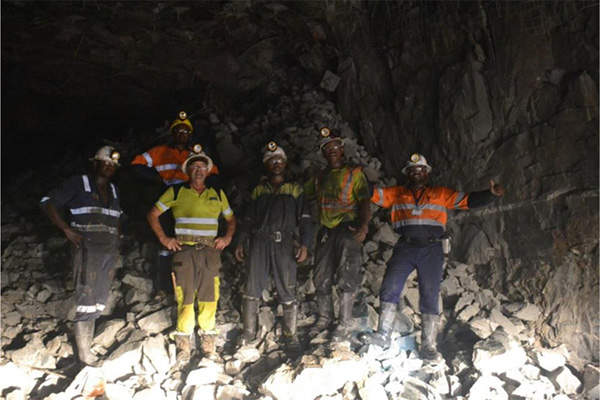
Endeavour Mining’s Tabakoto Gold Mine in western Mali is located approximately 360km west of the capital city, Bamako. Endeavour owns 80% of the mine through its wholly owned Malian subsidiary Ségala Mining Corporation, while the Government of Mali owns the remaining 20%.
First gold from the Tabakoto open pit was poured by Nevsun in 2006 but operations were suspended in September 2007. Endeavour acquired and restarted the mine in February 2009. Final commissioning of the processing plant commenced in March 2013 and the mill reached designated capacity in May 2013. Underground mining was commenced in June 2014.
The Tabakoto mine produced 125,231oz of gold in 2013.
Tabakoto mine location, geology and mineralisation
Endeavour’s gold mine is spread over 156km² and covers three exploration permits, Ségala, Dougala and Kenieba East. It is divided into eight deposits, Tabakoto NE, Tabakoto NW, Tabakoto South, Dioulafoundou, Ségala Main, Ségala NW, Dar Salam and Djambaye II.
Hidden Valley is an open pit gold-silver mine located in Morobe Province of Papua New Guinea.
Tabakoto NE, Ségala main and Ségala NW are underground mines, whereas the remaining are a combination of open pit and underground mines.
The mine is divided into three strike-continuous gold zones, Tabakoto North, Tabakoto South and Ségala Main zones. The zones were originally interpreted to be generally aligned in north-south direction over a total strike length of approximately 2,400m and to a maximum depth of 580m vertically.
The property is located in the eastern part of the Paleoproterozoic Kédougou-Kéniéba Inlier, which is bounded by the Hercynian Mauritania Orogenic Belt on its western margin. Flat-lying sandstones of the Paleozoic Taoudeni Basin lie above the Inlier. Lode gold style of mineralisation is found at the mine area.
Tabakoto gold mine reserves and resources
As of 31 December 2013, the Tabakoto mine is estimated to contain proven and probable reserves of 6.9Mt of ore graded at 3.6g/t Au, containing 794,000oz of gold.
Measured and indicated resources are estimated to be 17.2Mt of ore containing 1.67Moz of gold.
Mining and processing of ore at Tabakoto
Tabakoto underground operation is carried out using long-hole open stoping. Primary and secondary stopes are used to access the mine. The primary stopes are filled with cemented rock fill, while the secondary stopes are blasted after the appropriate curing time has elapsed.
Sub-vertical veins of the Tabakoto underground mine are accessed using decline ramps from the north and south portals. The north ramp accesses the north-west veins and the south ramp accesses the north-east and south veins. Ore from the underground mines is hauled to the surface via load haul dumps and transported to the processing plant by trucks.
The open pit mines are mined using conventional drill and blast method followed by load and haul activity. Djambaye II is mined using a combination of Endeavour and SFTP contactor fleet.
The major mining fleet at the open pit mines consists of Volvo haul trucks, CAT, Volvo and Liebherr loading units, CAT 980H and 966G ROM loaders, and CAT D8 and D9 dozers.
Mine ore is crushed in a primary crushing circuit, which operates at a maximum throughput of 400t/h. The crushed product is then dumped onto a new stockpile and fed to the 4,200tpd capacity SAG mill using apron feeders and conveyor systems.
Approximately 72% of the crushed material is subjected to gravity treatment in a gravity concentration circuit and the remaining is transported back to the ball mill for regrinding. The circuit comprises three Falcon concentrators, a Gemini shaking table and a Gekko InLine Leach Reactor (ILR) unit.
Gold is extracted via a standard carbon-in-leach plus gravity circuit with a recovery rate of 92%-95%. Two electro-winning cells are used to recover gold from the concentrate from the gravity circuit.
Infrastructure facilities at Tabakoto gold mine
The mine is accessed by an all-weather graded dirt road from Kéniéba, which will connect to Bamako by the RN13 national highway.
Power for the mining operations is supplied by the on-site 22.38MW capacity power station, which is equipped with 19 diesel-driven Cummins alternators.
Raw water required for the processing plant is pumped from a pump station on the Faleme River via two pipelines.
The mine comprises two 1.5 million-litre and one 2 million-litre tanks, near the processing plant, for storing the diesel fuel required for operations.
Workers are accommodated at the Tabakoto property camp, which is capable of housing more than 300 people.
Contractors involved
In August 2010, GENIVAR was awarded the engineering, procurement and construction management (EPCM) contract for increasing the processing plant’s throughput from 2,000tpd to 4,000tpd.
Byrnecut Mali acted as a contract miner for the mine until April 2014.
Rocksure was engaged for conducting production drilling and BME was engaged for performing blasting activity. Vivo Energy was awarded the fuel supply contract.







